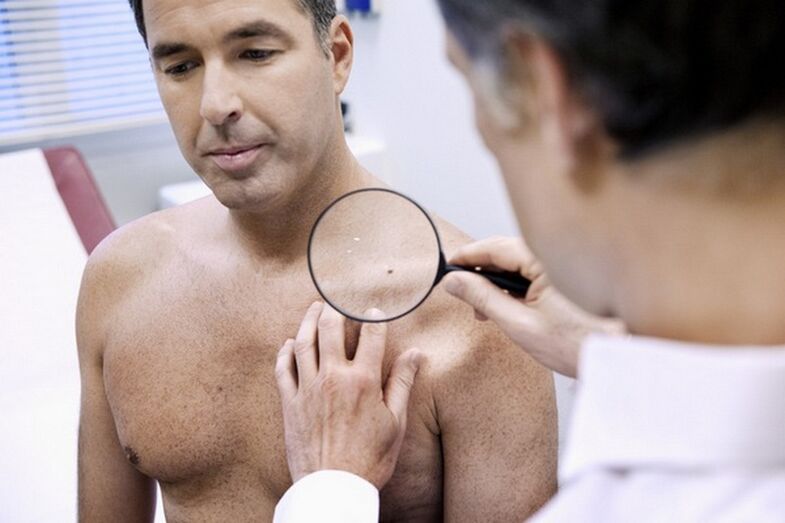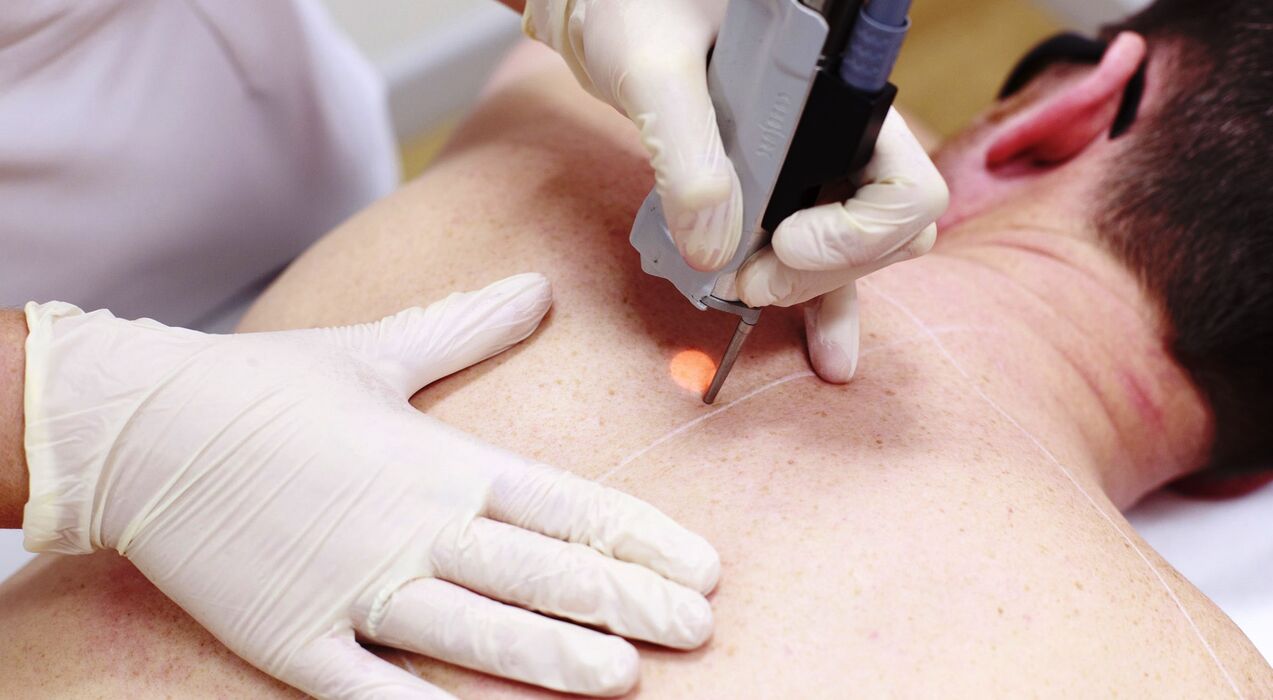In most cases, human papillomavirus in men is not life-threatening. Once in the body, HPV causes the appearance of benign formations. But there are seals that have a high level of oncogenicity. The development of this strain is the first stage in the formation of oncology. The onset of a fatal disease can be accidentally "missed". The origin occurs in the upper layer of the epidermis and is not evident for a long time.
Types of papillomavirus
There are a large number of papillomaviruses. Some species have not yet been thoroughly studied. If you are infected with one type, you can get harmless warts, while with the other you can get malignant and cancerous formations. Papilloma in men on the head of the penis is the subject of special attention, because there is a high risk of developing cancer.
The classification of HPV strains is divided into three categories, according to the ICD:

- Non-oncogenic group (types 1-3, 5). They mostly pass because of the resistance of the human immune system. They never become malignant.
- Low risk virus. Infected through traditional sexual contact. In the presence of favorable conditions for development, in relatively rare cases, they can be the initial stage of the oncological process. This type includes: 6, 11, 42-44.
- A high percentage of "severe" pathologies. This class of pathogens is often the provocateur of malignant genitourinary formation. The most dangerous of them are types 16 and 18, which contribute to the development of genital cancer in men and cervical cancer in sexual partners.
It is important to know! Of special note are strains of type 13, 31, 33 and 35. Their danger lies in the development of genital warts in intimate places. Another no less serious sign of infection is a rash (58, 39. 52, 30, 42, 43, 59, 55, 57, 40, 61, 62 and 67-70).
Features of the development of papillomas in the male body
When entering the human body, the papilloma virus always goes through the same stages of development:
- Latent level. This disease does not show itself in any way by external symptoms. Its presence can be diagnosed only by PCR.
- Clinical phase. Various formations appear as a result of increased cell division.
- Dysplasia is a progressive stage. A change in the shape of the cellular structure occurs.
- Carcinoma - papillomavirus integrates, malignant mutation of the DNA code occurs. Invasive cancer develops.
Genital warts that occur in the bikini area, testicles, glans and foreskin require immediate treatment. Such growth negatively affects a man's personal life, creates health problems for his wife, and contributes to the development of papillomatosis in unborn children. They can also be malignant. Sometimes condyloma is a symptom of a sexually transmitted disease that has not been fully revealed (for example, syphilis).
Route of infection
The most common way to acquire HPV is through sexual contact with a carrier of the virus. In this case, the form of intimate communication is not important. Household routes of infection are less common. There is a risk of infection when visiting public places:
- Swimming pools, baths, saunas - pathogenic microbes are easily spread from the host, penetrating through abrasions and scratches.
- Hairdressing and beauty salons - the risk of infection is inversely proportional to the handling of instruments.
- Surgical and dental interventions can contribute to infection.
Maximum protection is maintaining basic personal hygiene: inside your own home and outside. Barrier methods of contraception can significantly reduce the risk of disease.
Favorable conditions for progress
After entering the male body, the virus remains in "sleep" mode for a long time. The following reasons can "activate" it:
- Weak immunity after a long illness.
- The presence of normal physical or emotional "excesses".
- Body fatigue due to severe stress.
- Various sexual pathologies.
- Increased sweating.
A dangerous feature of HPV is that the characteristic symptoms do not appear at the initial stage of the disease, but at its "height". What prevents the identification of threatening strains at an early stage.
Symptom complex

Newly emerging formations with HPV have their own nuances. To exclude the presence of other similar diseases, it is necessary to carefully analyze the clinical "picture". So, the signs of the papilloma virus in men:
- Acrochord or thread-like papilloma on the stalk. Usually flesh colored or dark brown. Reaches a size of 5 mm. They appear on the neck, face, scrotum and testicles, groin and armpits. They are often injured.
- A flat growth is a collection of nodules that have a shiny surface without folds. Has a beige or pink color. Usually the size does not exceed 8 millimeters. Affected areas are the shins, hands, and forearms.
- Condylomas on the head in men are gray-tipped plaques on stalks. There are single and multiple. Frequent "habitat" areas for growth are the pelvis and genitals. Often the anus is blocked, causing burning, itching, and bleeding.
- Spines are round formations visible on the outside of the palms and soles of the feet. If left untreated, after a few weeks it becomes rough and a black dot appears in the center.
- Common warts (simple, coarse). They appeared simultaneously as a whole group. The maximum size is 10 mm. Usually knees, hands and fingers "suffer".
The earlier treatment for papillomavirus is started, the greater the chance of avoiding serious health consequences.
Dangerous consequences
Statistical data report rare cases of cancer development due to HPV in men. A worrying factor is the formation on the surface of the penis and pubis. At any time they can develop into a malignant form. Other acne, for example on the back, in the mouth, should also respond with adequate measures.
Attention! If the manifestation of papillomavirus is not treated for a long time, it can develop into melanoma - skin cancer.
Establish a diagnosis
How to treat papilloma on the head of the penis? Visiting a dermatologist is the first step toward healing. The initial appointment with a specialist includes a thorough visual examination of the mucous membranes and skin. A detailed survey of patients is also carried out, and individual complaints are heard.
If the presence of the virus is suspected, the patient is sent for additional examinations:
- Blood and discharge from the bladder are donated for analysis. Based on the indicators obtained, the causative agent of the virus is isolated from the general DNA material.
- Condyloma biopsy is performed. The results determine the presence or absence of cancer cells.
- A cytological examination of the mucous membrane is performed.
- Sometimes ureteroscopy is needed.
After the final history, the doctor makes a conclusion and determines the treatment complex.
Treatment for men
It is impossible to get rid of HPV completely, like the herpes virus. Treatment of papillomas in men is as follows: all therapeutic and surgical measures are aimed at flattening the pathological manifestations and increasing the period of remission.
Experts will help
To develop optimal tactics to combat papillomavirus, it is necessary to undergo examination by several specialists. (Venereologist, proctologist, urologist and, if necessary, oncologist). Initially, you can contact your local therapist, who will coordinate your further actions.
Papilloma removal
When identifying virus types 16 and 18, removal of all types of tumors is a must. After that a course of drug therapy is prescribed, which is able to suppress the causative agents of the disease and at the same time maximize the body's natural defenses. Radical methods to remove papillomas are used if conservative treatment does not lead to the desired result.

This procedure is carried out in different ways:
| Type of intervention | Methods of implementation | The purpose and characteristics of the procedure |
|---|---|---|
| Surgery | The tool is an ordinary scalpel. The choice of anesthesia depends on the affected area, the medical prescription and the wishes of the patient. | Used mainly for oncological papillomas. |
| Lasers | With the help of infrared rays, the pathological growth "burns". | It is characterized by minimal complications and the possibility of complete removal of damaged tissue. |
| Removal using a radio knife | Effects on education with high frequency waves. | An effective, fast and painless way. Often used to remove papillomas under the head of the penis. |
| Electrocoagulation | The effect of electric current on papilloma. | It is distinguished by a protracted healing process (up to two weeks). A painful method, according to customer reviews. After that, the scars remain. |
| Cryodestruction | Liquid nitrogen is used. | Based on patient comments, this is a rather troublesome method. |
| Chemical methods | Local use of various synthetic agents. | Do not use on parts of the body that are too sensitive, such as the head of the penis. Damage to healthy tissue is also possible. |
Attention! It is absolutely forbidden to remove papillomas yourself at home or smear them with iodine. Such damage can lead to the transition from a benign tumor to a cancerous tumor.
Other therapeutic methods
Conservative treatment of papillomavirus in representatives of the stronger sex consists of taking medication.
Usually, the specialist prescribes the following drugs:
- Stops increased cell division: cream, ointment.
- A natural local agent (celandine) is sold in pharmacies at a reasonable price.
- Promotes the activation of free synthesis of interferon in the patient's body.
- Immunomodulator tablets.
- Antiviral drugs.
The dosage, regimen, and duration of the course are determined only by the attending physician. During therapy, qualified monitoring of the effectiveness of the chosen tactics and timely detection of possible allergic reactions is necessary. Any virus cannot be treated with antibiotics. The need for its use is taken into account by the doctor, depending on the course of the disease. The use of folk recipes for HPV cannot replace medical prescriptions. The use of various herbal decoctions is possible subject to prior consultation with a specialist. This fact cannot be ignored if there is chronic intestinal pathology.
Prevention of papillomas
Preventive measures for the papilloma virus are possible without special knowledge and skills. The conditions for a healthy lifestyle, monogamous relationships and personal hygiene are available to everyone. Modern scientists have developed several vaccines, vaccinations that significantly reduce the risk of developing HPV with high oncogenic potential (6, 11, 16 and 18). The vaccine, which consists of two elements, is designed to prevent the most dangerous strains. The most suitable age for vaccination is considered to be between 10 and 25 years. The effective duration of the vaccine is approximately 6. 5 years. Vaccination is suitable for both girls and boys.
Conclusion
So that at one "wonderful" time you do not have to face the problem of how to get rid of papillomas, you need to remember about precautions. Protected sexual intercourse, unfortunately, does not always guarantee good health. Regular preventive medical checkups will help. Whether vaccination is necessary is up to everyone to decide for themselves. But if there is a proven way to protect against a potentially deadly disease, then it would be a sin not to use it.















